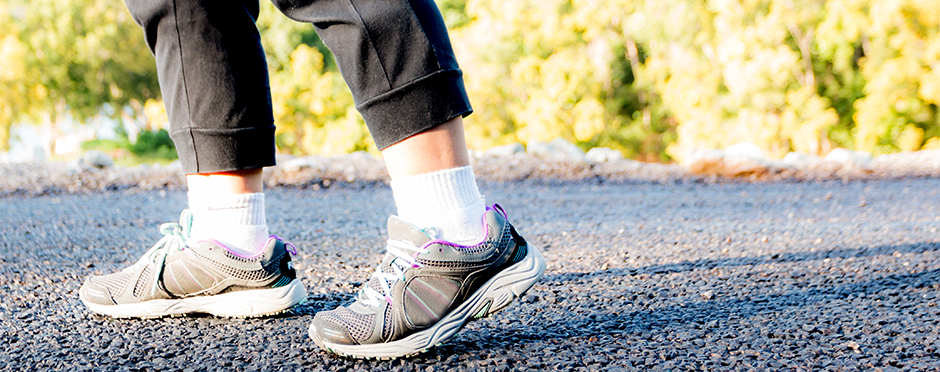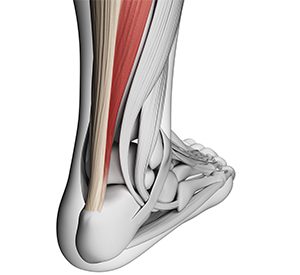
Take Control of Your Tendons
Leave a CommentA tendon is a connective tissue that attaches muscle to bone. This tissue can be subject to injury over a person’s lifespan. Tendons are unique in that they are capable of restoring and recoiling energy as well as being readily adaptable, with the ability to respond to loading or stress. One of the more famous tendons, Achilles, connects your calf to your heel and allows for pushing off the ground with walking.

Both aging1 and disuse2 may alter the material properties of tendon. Chronic inactivity, such as that associated with a sedentary lifestyle, will create compliance (less stiffness) within the tendon.2,3,4 Now, you may be thinking that stiffness is “bad” in a tendon or muscle. But, imagine pulling on a rope to move an object. How effective is this rope if it stretches out while attempting to move the object? Obviously, this would make an ineffective rope. Your tendons are similar and need to be stiff in order for your muscle to create sufficient force when pulling on bone to create movement.
The Greek philosopher Diogenes who, when speaking against the common perception that one should slow down when reaching old age, compares himself to the last runner in a relay race and argues ‘would you have me slow down as I near the finish line?’⁵This begs the question: How do we keep our tissues supple and ready for demanding tasks as we age? While taking certain measures, we can maintain their strength throughout the lifespan.
Diet and Hydration
Your muscles are constantly undergoing remodeling, adding and removing muscle proteins. Also, muscle quality appears to be closely tied to this remodeling process, or the rate at which new muscle is produced and old protein is removed.⁶ Collagen production in human tendons rises by around 100 percent with just one bout (60 minutes) of exercise.7 In order to accommodate tissue remodeling, it is important that adequate protein intake is achieved. Complete proteins such as eggs, lean meat and fish are excellent options to be routinely included in your diet. Adequate fluid intake is also of paramount importance as water makes up a very large percentage of connective tissue content.
Resistive Exercise
Far and away, the most important variable when it comes to healthy, strong muscles and tendons throughout the lifespan is the presence of tissue loading, which can be done through exercise. Research has shown that our muscles need to be challenged beyond what we experience on a day-to-day basis to induce meaningful adaptations.4 A training-induced increase in tendon stiffness is associated with a 25 percent faster development of joint torque, which could lead to the difference between recovering from a trip or falling. It has been shown that the rate of patella tendon strains can be reduced after 14 weeks of strength training by increasing tendon stiffness.1
Given the primary role of tendons as transmitters of contractile forces from muscles, an increase in tendon stiffness would be expected to make the tendon more effective at transmitting structure and increasing the speed of force transmission.⁸ These are all reasons why you should take ownership of your tendons and live a life like Diogenes, the aforementioned Greek philosopher, would have wanted.
If you are currently experiencing any tendon pain or begin feeling pain as you work to increase your tendon stiffness, schedule a free assessment at Athletico. Our experts will take a look at your condition and provide recommendations for treatment.
Free assessments are available in-clinic and virtually through our telehealth platform.
The Athletico blog is an educational resource written by Athletico employees. Athletico bloggers are licensed professionals who abide by the code of ethics outlined by their respective professional associations. The content published in blog posts represents the opinion of the individual author based on their expertise and experience. The content provided in this blog is for informational purposes only, does not constitute medical advice and should not be relied on for making personal health decisions.
References:
1. Reeves ND, Maganaris CN, Narici MV. Effect of strength training on human patella tendon mechanical properties of older individuals. J Physiol. 2003 May 1;548(Pt 3):971-81.
2. Maganaris CN et. al. Adaptive response of human tendon to paralysis. Muscle Nerve. 2006;33:85–92.
3. Kubo K, Akima H, Ushiyama J, Tabata I, Fukuoka H et al. (2004). Effects of resistance training during bed rest on the viscoelastic properties of tendon structures in the lower limb. Scand JMed Sci Sports 14, 296–302.
4. Reeves ND, Maganaris CN, Ferretti G & NariciMV (2005a). Influence of 90-day simulated microgravity on human tendon mechanical properties and the effect of resistive countermeasures. J Appl Physiol 98, 2278–2286.
5. Narici NV, Maganaris CN. Adaptability of elderly human muscles and tendons to
increased loading. J. Anat. (2006) 208, pp433–443
6. Thompson LV. Skeletal muscle adaptations with age, inactivity, and therapeutic exercise. J Orthop Sport Phys Ther 2002 Feb;32(2):44-57.
7. Miller BF et al. Coordinated collagen and muscle protein synthesis in human patella tendon and quadriceps muscle after exercise. J Physiol. 2005 Sep 15;567(Pt 3):1021-33. Epub 2005 Jul 7.
8. Reeves ND, Maganaris CN, Narici MV. Myotendinous plasticity to aging and resistance
exercise in humans. Exp Physiol 91.3 pp 483–498
